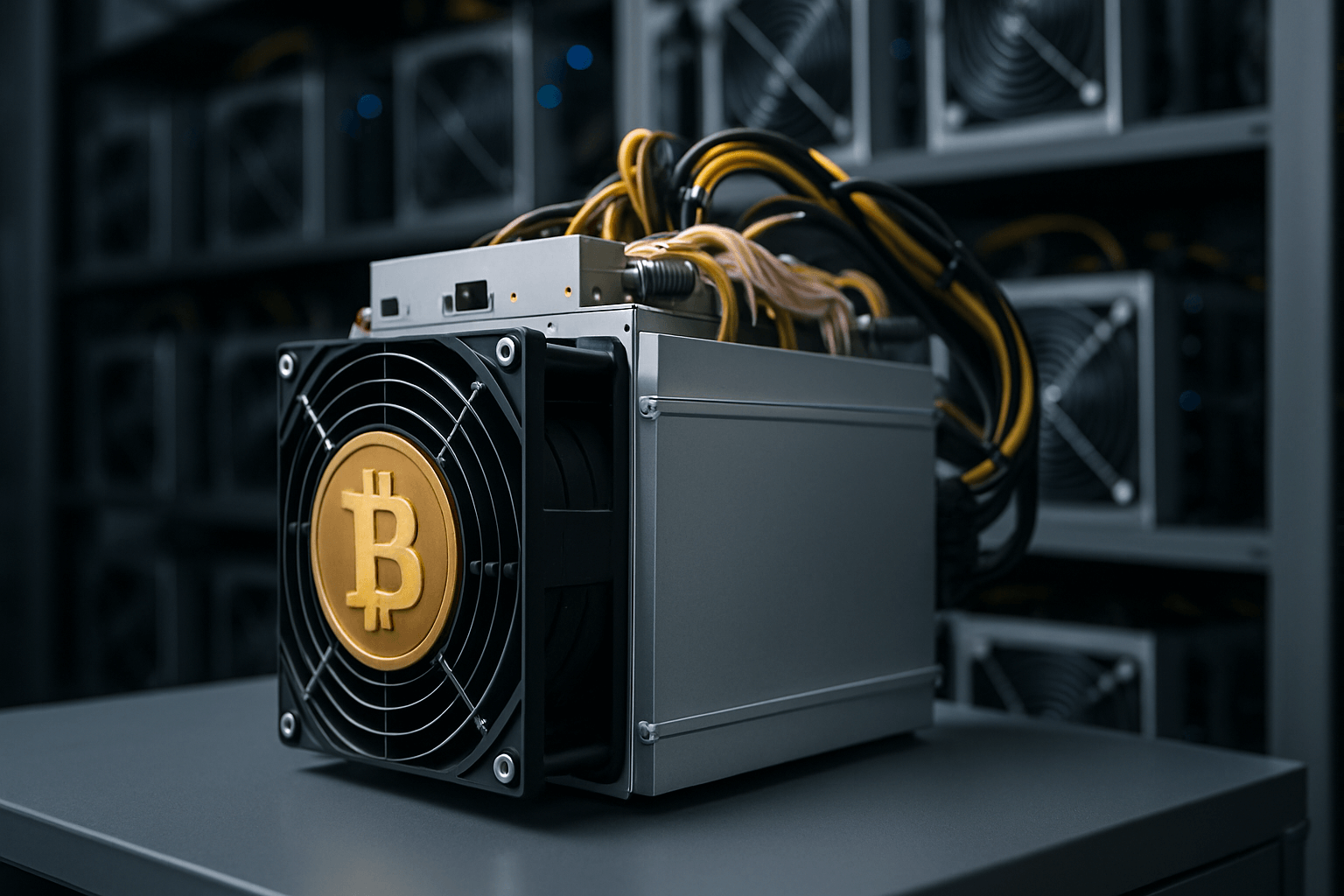Crypto & DeFi
DeFi Interest Rates: What You Need To Know Before Investing In DeFi
December 07, 2023
Crypto & DeFi
December 07, 2023

The world of DeFi comes with many advantages over traditional finance. Read on to find out about the different types of interest rates in DeFi loans and how they may suit your individual needs.
DeFi, or decentralized finance, is a term used to describe a range of financial services and products that operate on public blockchains such as Ethereum. DeFi is revolutionizing the way we interact with the financial world. Unlike traditional lending markets, the DeFi space leverages public blockchains to create more open, transparent, and accessible financial systems, free from centralized intermediaries.
With DeFi, you can trade, borrow, lend, and invest in various digital assets without going through the traditional financial system of banks, brokers, or other centralized institutions. One of the most popular and exciting unlocks of DeFi comes in the form of DeFi lending.
DeFi lending provides a host of benefits over traditional lending, but it also differs in several important areas, with one of the largest differences being in how DeFi treats loan interest. In this article, we will explore how DeFi interest rates compare to traditional interest rates, how they are calculated, and how you can find the best DeFi rates for your borrowing needs.
One of the main distinctions between DeFi and traditional finance is in interest rates. Interest rates determine the cost of borrowing money. They determine the viability and risk profile of loans and investments.
In traditional finance, interest rates are usually determined by financial institutions such as banks. Traditional interest rates depend on a variety of factors including personal creditworthiness and loan amount, as well as macro-economic conditions. Generally, interest rates will be based on a benchmark rate set by a central bank. Interest rates are often fixed or variable. For variable rates, they will often only change based on specified conditions such as the central bank raising interest rates.
DeFi interest rates are determined purely by the market forces of supply and demand. DeFi loan rates depend on the availability of crypto liquidity across different digital assets as well as the volatility of the cryptocurrencies involved. For this reason, DeFi interest rates are usually variable, meaning they fluctuate in real-time over the loan duration.
In recent years, DeFi interest rates have generally been lower than traditional rates. This is due to a number of reasons including lower operational costs for DeFi lending platforms, less demand to borrow crypto assets, and the lack of central benchmark rate within DeFi. Most DeFi platforms also do not require intermediaries, KYC (know-your-customer), or credit checks, which reduces the barriers and fees for borrowing.
However, DeFi rates are also more volatile than traditional rates, which can pose challenges for users. DeFi rates can change rapidly and unpredictably, depending on market conditions, exposing users to higher risks of liquidation, under-collateralization, and missed opportunities.
Another difference between DeFi and traditional rates is the accessibility and usability of DeFi lending protocols:
DeFi lending protocols are open and accessible to anyone with an internet connection and a crypto wallet, regardless of their location, identity, or credit history. However, DeFi projects can also be complex and difficult to use, especially for beginners. Users need to understand how to set up and connect their wallets, navigate the interfaces, deposit funds as collateral, and manage their loans.
On the other hand, traditional loans are more regulated and restricted. This means it takes more steps to get a loan, but traditional avenues can be more borrower-friendly and convenient thanks to dedicated customer support and support for under-collateralized borrowing.
Between the worlds of traditional loans and DeFi lending lies the world of CeFi, or “centralized finance” borrowing. Centralized loans involve crypto assets, but they are issued through centralized platforms.
CeFi platforms are centralized platforms that offer crypto lending and borrowing services. They combine some of the features and benefits of both DeFi and traditional platforms, such as ease of use, fiat loans, and low fees. However, they also have some drawbacks and limitations, including high APRs, KYC requirements, and custodial risks. We've compared CeFi and DeFi extensively in our article "CeFi vs DeFi Loans: Which is Better?"
Now that we’re familiar with DeFi lending and how it stacks up against other, more traditional lending options, let’s further explore the topic of DeFi interest rates.
Just like with traditional loans, DeFi lending rates are the rates that borrowers pay (or lenders can earn interest on) when taking out crypto loans through DeFi protocols. DeFi lending rates can vary depending on the protocol, the supplied digital asset, the market conditions, and other factors.
There are two types of DeFi interest rates: floating and fixed.
Floating interest rates are interest rates that fluctuate constantly to reflect current market conditions.
Fixed interest rates are interest rates that remain constant throughout the duration of the loan.
Each of these types of rates have their advantages and disadvantages, depending on the user’s preferences and needs.
Floating interest rates are determined by the crypto market at any given time. They depend on the availability of and demand for various crypto assets, the liquidity and utilization of DeFi lending pools, and the volatility and risk of the overall crypto market. This means that interest rates fluctuate over the lifespan of a floating interest rate loan.
DeFi lending protocols use floating interest rates to manage the supply of different crypto assets in their pools. By changing the crypto interest rates dynamically based on market conditions, protocols can incentivize users to deposit or borrow more or less of certain assets in a liquidity pool, thus balancing the liquidity and utilization of each pool.
For example, if there is a high demand for borrowing a certain digital asset, such as DAI, the protocol will increase the supply interest rate (known as the annual percentage yield, or APY) for DAI to encourage more lenders to deposit DAI and earn higher returns. Conversely, if there is a low demand for borrowing DAI, the protocol will lower the interest rate for DAI, attracting more borrowers to take out loans in DAI.
It’s thanks to this market-based price-finding mechanism that most DeFi loans use floating interest rates.
In general, DeFi loans come with floating interest rates for several reasons:
Market Responsiveness: Floating interest rates enable DeFi lending platforms to adjust their rates rapidly in response to market dynamics. This responsiveness ensures that rates align with current market conditions, enhancing the efficiency of the lending and borrowing ecosystem.
Risk Mitigation: DeFi lending is characterized by the volatility of digital assets used as collateral. Floating rates allow protocols to adapt to fluctuations in collateral values, helping ensure a stable system and to keep loans solvent.
Competitive Edge: By offering rates that mirror the market in real time, DeFi protocols can attract more users and liquidity, fostering competition and innovation within the space.
Learn more about floating interest rates: "What is a Floating Interest Rate in DeFi?"
Fixed interest rates offer borrowers financial stability and predictability knowing exactly how much interest they will pay over the life of their loan. Unlike floating interest rates, which fluctuate frequently based on market conditions, fixed interest rates are locked in and do not change.
DeFi lending protocols use fixed interest rates to attract borrowers who value stability and risk mitigation. By offering fixed interest rates, protocols can provide borrowers with a reliable and consistent borrowing experience, regardless of how volatile crypto assets get.
Some of the factors that influence the determination of fixed interest rates are:
Market Conditions: Like floating rates, fixed interest rates reflect the overall market conditions, including the supply and demand for borrowing and lending specific digital assets. When demand for borrowing outpaces the supply, interest rates may rise. Conversely, when there is more supply than demand, rates may decrease. The main difference is that once you take out a loan, your rate is locked in and it can’t change during the loan term.
Protocol Governance: Most DeFi lending platforms have decentralized governance structures allowing token holders to vote on critical protocol parameters including interest rates. The transparency and community-driven nature of these governance mechanisms ensures that rate adjustments align with the needs and preferences of the DeFi community.
Risk Parameters: DeFi protocols often establish risk parameters to safeguard the ecosystem. These parameters may include certain loan-to-value (LTV) ratios and liquidation thresholds, which can impact interest rates. Higher-risk parameters may lead to higher fixed interest rates to compensate for potential liquidations.
Learn more about fixed interest rates: "What are Fixed-Interest Rate DeFi Loans? A Comprehensive Guide"
Before you borrow from a DeFi protocol, you need to understand the loan terms that apply to your loan. Loan terms are the conditions and specifications of your loan including the amount, duration, interest rates, and collateral requirements. Loan terms can vary depending on the protocol, the asset, and the market conditions.
Some of the most important loan terms include:
Loan-to-Value Ratio (LTV)
The LTV is the ratio of your loan value to the value of your collateral. For example, if you supply $100 worth of collateral and borrow $50, your LTV is 50%. Generally speaking, a lower LTV means lower risk of liquidation but also lower borrowing power.
Liquidation Threshold
The liquidation threshold is the LTV at which your loan collateral gets liquidated. Generally speaking, a higher liquidation threshold means you can borrow more before a high risk of liquidation.
Interest Rate
The interest rate is the cost of borrowing an asset or the return on lending an asset. Interest rates can be either fixed or floating. A lower interest rate means a lower cost of borrowing.
Before taking out a loan, you should always understand the loan requirements of the protocol that you choose and make sure that they match your expectations and risk appetite. You should also monitor market conditions and any relevant protocol parameters regularly to avoid unpleasant surprises or losses.
Familiarize yourself with other important keywords related to your DeFi Loan: "DeFi Loans: The Terms You Should Know"
Finding the current DeFi loan rates is an important first step for anyone looking to take out a crypto loan. There are several ways to find the current DeFi loan rates for different protocols and digital assets. Some of the most common and convenient methods include:
Official Protocol Websites: Most DeFi protocols have their own websites or apps that display the current interest rates for each asset they support. For example, Compound is a popular DeFi lending protocol that shows the current supply and borrow rates for various assets on its website. Aave is another crypto lending platform that provides loans at competitive rates. On these platforms, users can also see other information such as the total supply and borrow amounts, the utilization ratio, and the collateral factor for each asset.
DeFi Aggregators: DeFi aggregators are platforms that collect and compare data from various DeFi lending platforms, making it easier for users to find the best rates and opportunities. For example, Rocko is a DeFi aggregator that helps users find and access the best DeFi lending rates from trusted protocols. Rocko allows users to view interest rates, supported assets, collateral requirements, and other factors.
Blockchain Explorers: Blockchain explorers are platforms that allow users to view and analyze transactions and activities on a blockchain network. Some blockchain explorers, such as Etherscan, also provide data feeds that include DeFi interest rates for various protocols and assets. Users can use blockchain explorers to verify and monitor the interest rates and other parameters of the protocols they use.
For your convenience, we’ve included the following table below that shows the approximate range of DeFi loan rates for some of the top crypto assets on Compound and Aave, based on the historical data from the 2nd half of 2023:
| Asset | Compound Supply Rate | Compound Borrow Rate | Aave Deposit Rate | Aave Borrow Rate |
|---|---|---|---|---|
| ETH | 0.01% - 0.15% | 2.5% - 6.5% | 0.05% - 0.3% | 1.5% - 5% |
| DAI | 2% - 10% | 4% - 15% | 2.5% - 15% | 4.5% - 20% |
| USDC | 2% - 12% | 4% - 18% | 3% - 18% | 5% - 25% |
| WBTC | 0.01% - 0.2% | 2.5% - 7% | 0.1% - 0.5% | 2% - 6% |
| USDT | 2% - 14% | 5% - 22% | 3.5% - 20% | 6% - 30% |
| UNI | 0.01% - 0.5% | 2% - 8% | 0.05% - 0.8% | 1.5% - 7% |
| LINK | 0.01% - 0.3% | 2% - 6% | 0.05% - 0.6% | 1.5% - 5% |
| SUSHI | 0.01% - 0.4% | 2% - 7% | 0.05% - 0.7% | 1.5% - 6% |
| SNX | 0.01% - 0.2% | 2% - 5% | 0.05% - 0.4% | 1.5% - 4% |
| YFI | 0.01% - 0.2% | 2% - 5% | 0.05% - 0.4% | 1.5% - 4% |
DeFi borrowing can be difficult and cumbersome, especially for those newer to the vast world of crypto. At Rocko, we believe you shouldn’t be locked out of the future of finance (and low interest rates) just because of complicated protocol technology. That’s why we’ve built a platform that helps you take out DeFi loans with a fraction of the complexity.
Rocko is a new platform that enables crypto owners to easily and securely borrow from popular DeFi protocols like Aave, Compound, and Morpho and get funds in minutes — no experience needed! Use the loan to purchase real estate, pay down higher-rate debt, make everyday purchases, and much more.
Rocko also provides a loan management dashboard and tools like text and email alerts to help manage your loan and collateral. The Rocko team consists of experienced crypto enthusiasts who are ready to help you with any questions you may have. You can join the Rocko Discord server, follow our Twitter account, or visit our resource center to learn more about DeFi borrowing.
Sign up for Rocko and get a loan today!
Rocko does not guarantee the reliability of the Site content and shall not be held liable for any errors, omissions, or inaccuracies. The opinions and views expressed in any articles on rocko.co are solely those of the author(s) and do not reflect the opinions of Rocko. The information provided on the Site is for informational purposes only, and it does not constitute an endorsement of any of the products and services discussed or investment, financial, or trading advice. A qualified professional should be consulted prior to making financial decisions.

Rocko How-tos
Lock In Your Rate: How Kairos Swap Brings Fixed-Rate Lending to DeFi If you've ever borrowed against your crypto on Aave, Morpho, or similar…
September 15, 2025

Crypto & DeFi
Why Borrow Against Staked ETH? Liquid-staking tokens (LSTs) such as stETH, wstETH, cbETH and rETH let you keep earning staking rewards while…
June 17, 2025

Crypto & DeFi
Bitcoin Mining Loans: How to Fund Your Mining Business Bitcoin mining is the backbone of the Bitcoin network—a decentralized process where…
May 07, 2025